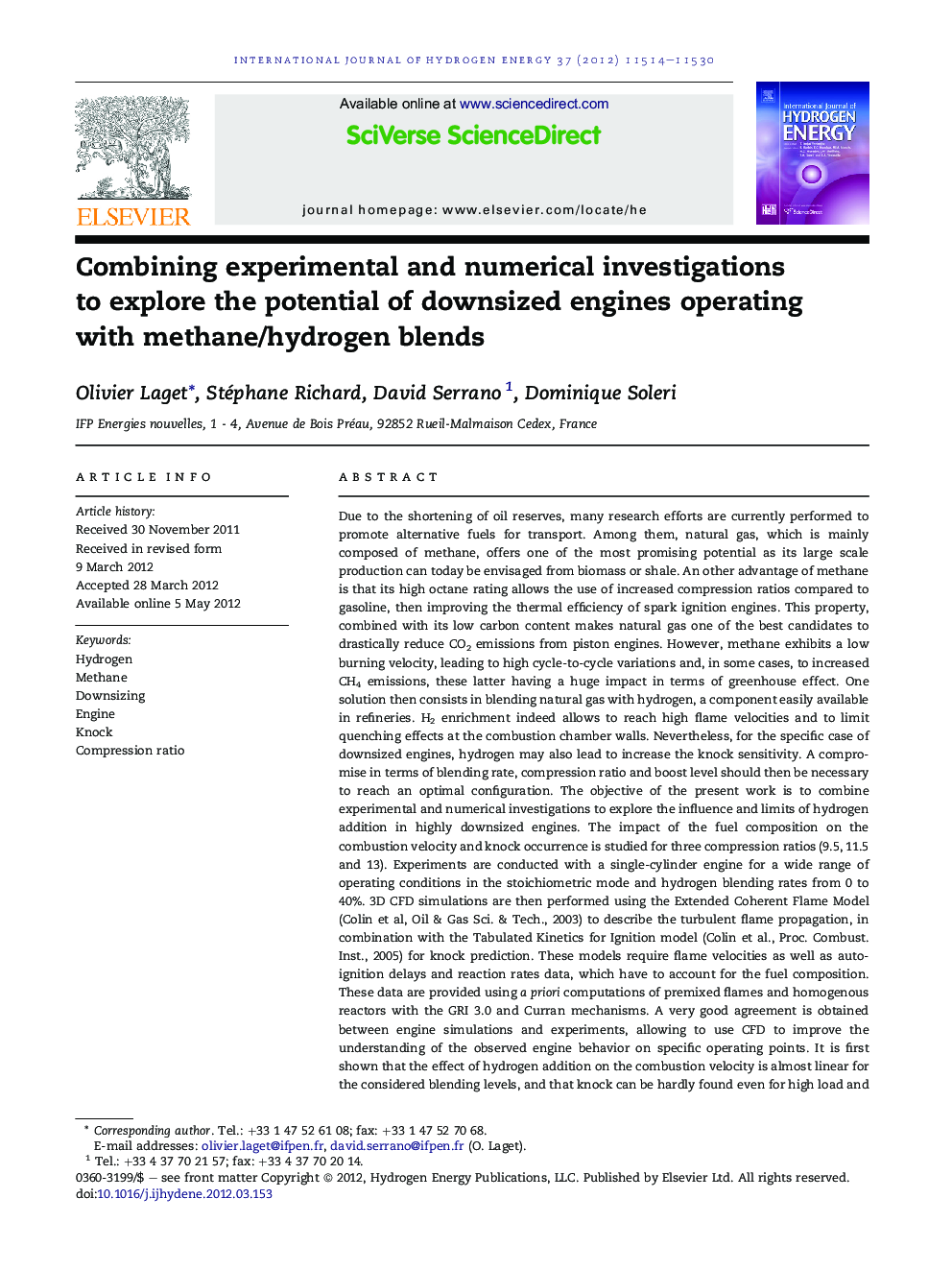| کد مقاله | کد نشریه | سال انتشار | مقاله انگلیسی | نسخه تمام متن |
|---|---|---|---|---|
| 1276316 | 1497554 | 2012 | 17 صفحه PDF | دانلود رایگان |

Due to the shortening of oil reserves, many research efforts are currently performed to promote alternative fuels for transport. Among them, natural gas, which is mainly composed of methane, offers one of the most promising potential as its large scale production can today be envisaged from biomass or shale. An other advantage of methane is that its high octane rating allows the use of increased compression ratios compared to gasoline, then improving the thermal efficiency of spark ignition engines. This property, combined with its low carbon content makes natural gas one of the best candidates to drastically reduce CO2 emissions from piston engines. However, methane exhibits a low burning velocity, leading to high cycle-to-cycle variations and, in some cases, to increased CH4 emissions, these latter having a huge impact in terms of greenhouse effect. One solution then consists in blending natural gas with hydrogen, a component easily available in refineries. H2 enrichment indeed allows to reach high flame velocities and to limit quenching effects at the combustion chamber walls. Nevertheless, for the specific case of downsized engines, hydrogen may also lead to increase the knock sensitivity. A compromise in terms of blending rate, compression ratio and boost level should then be necessary to reach an optimal configuration. The objective of the present work is to combine experimental and numerical investigations to explore the influence and limits of hydrogen addition in highly downsized engines. The impact of the fuel composition on the combustion velocity and knock occurrence is studied for three compression ratios (9.5, 11.5 and 13). Experiments are conducted with a single-cylinder engine for a wide range of operating conditions in the stoichiometric mode and hydrogen blending rates from 0 to 40%. 3D CFD simulations are then performed using the Extended Coherent Flame Model (Colin et al, Oil & Gas Sci. & Tech., 2003) to describe the turbulent flame propagation, in combination with the Tabulated Kinetics for Ignition model (Colin et al., Proc. Combust. Inst., 2005) for knock prediction. These models require flame velocities as well as auto-ignition delays and reaction rates data, which have to account for the fuel composition. These data are provided using a priori computations of premixed flames and homogenous reactors with the GRI 3.0 and Curran mechanisms. A very good agreement is obtained between engine simulations and experiments, allowing to use CFD to improve the understanding of the observed engine behavior on specific operating points. It is first shown that the effect of hydrogen addition on the combustion velocity is almost linear for the considered blending levels, and that knock can be hardly found even for high load and high compression ratio cases. It is also demonstrated that optimizing an engine for CH4–H2 blends combustion is a challenging task and that a dedicated engine design should be chosen.
► Study of H2 enrichment impact and limitations on combustion in downsized engines.
► Use of a combination of experimental and numerical tools.
► Specific developments were realized to compute flame propagation and knock with H2.
► Design rules may be adapted to get an optimal engine fuelled with CH4+H2 blends.
► Both tools show low propensity to knock occurrence even with high CR and H2 ratio.
Journal: International Journal of Hydrogen Energy - Volume 37, Issue 15, August 2012, Pages 11514–11530